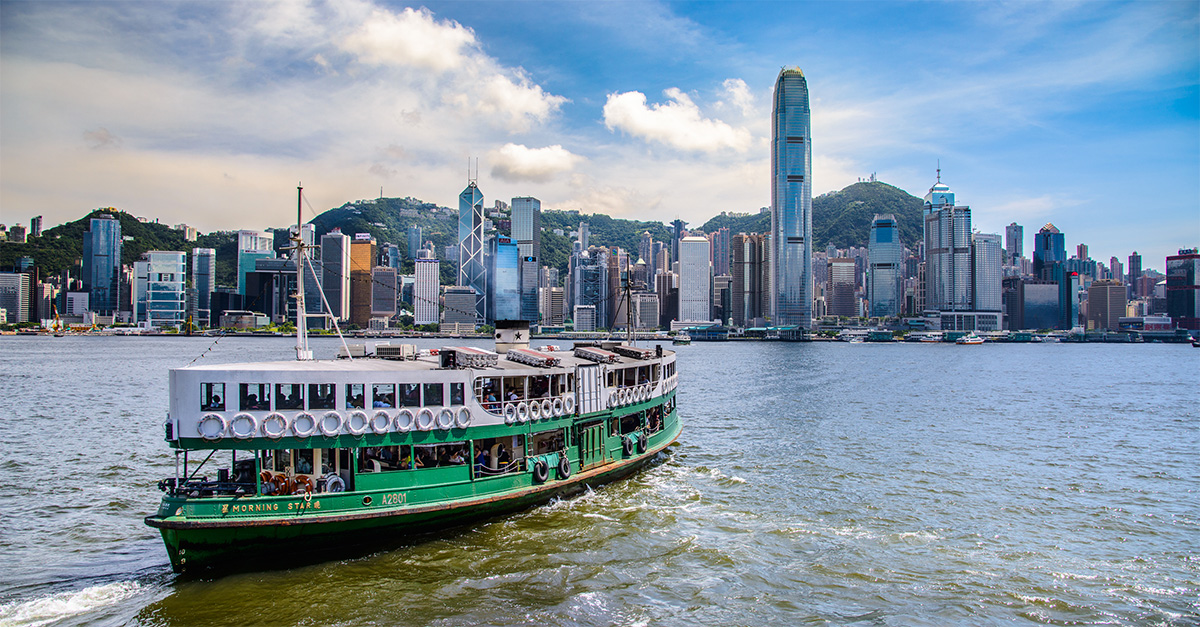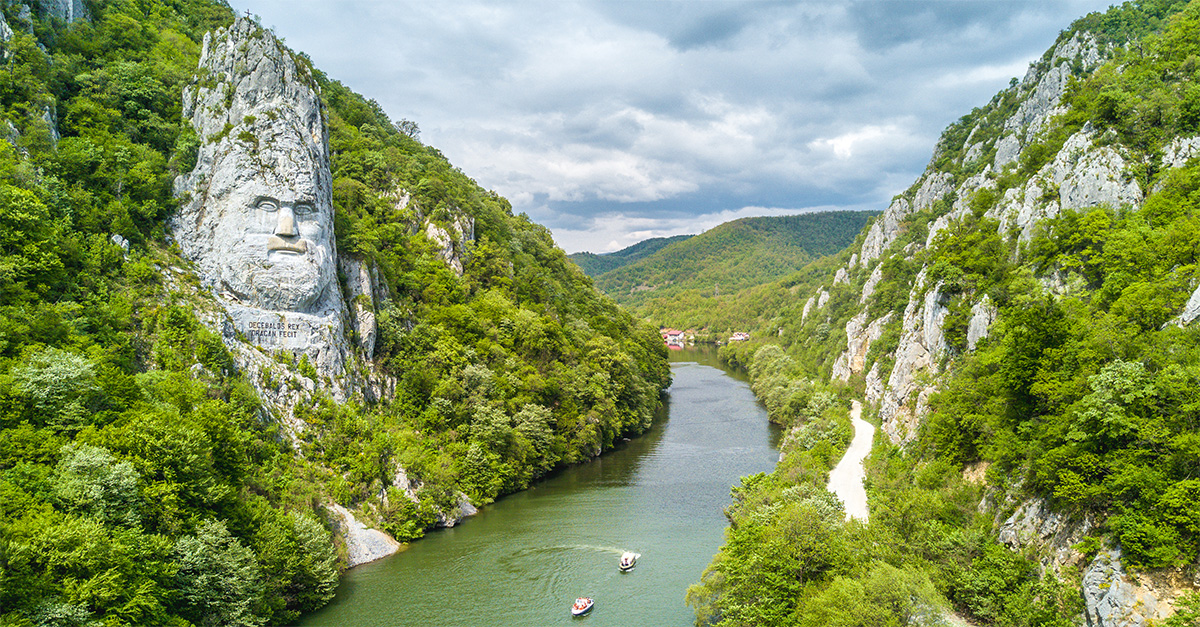Ever wondered what it’s like to climb Kilimanjaro, the world’s tallest free-standing mountain? Laura French took on the challenge.
Click here to download and save as a PDF.
It’s 3am and I’m slumped on a rock at the side of a steep, volcanic slope, trying to regain my energy – and the feeling in my fingers and toes (it’s -15C). I crunch my way through a frozen protein bar and try to prise open my water bottle, but it’s turned into a giant ice cube.
It’s summit night on Kilimanjaro, and I’m at an altitude of 5,150 metres. We’ve been zig-zagging our way across this frosty, scree-covered slope since midnight, and it’s starting to take its toll. But I’ve lost all concept of time. All I know is it’s cold, dark and silent.
“The sky above my head is a solid blanket of stars, so bright and far-reaching I feel as if I can see the entire universe.”
I look around for motivation – I don’t have to look far. The sky above my head is a solid blanket of stars, so bright and far-reaching I feel as if I can see the entire universe. Above me, the moon glows a rare, iridescent gold, and behind me the jet-black, jagged silhouette of the Mawenzi peak juts up like a cardboard cut-out against the midnight blue.
A trail of glittering headlights illuminates the way ahead, marking out other hikers who’ve come from far and wide, and it pushes me to go on – so much so that for a minute, I forget all thoughts of lack of sleep and cold and physical exhaustion. There’s a sense of beauty and serenity in being here, on a silent slope so far from civilisation, and I wonder if I’ll ever be anywhere quite this remote again.
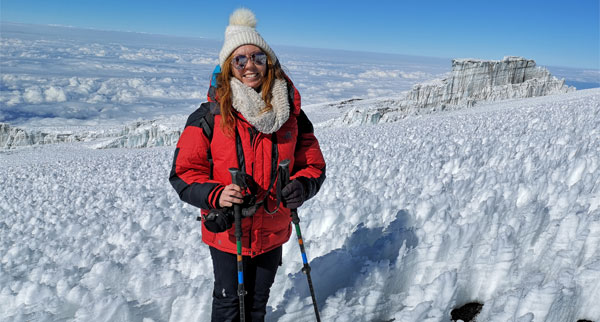
Dawn chorus
But there’s still five hours to go. As we continue to climb, it gets harder and harder, breaths coming shorter and faster. At about 5am, the faintest shred of violet begins to appear in the sky, gradually turning into strips of dark, burning orange and deep, inky blue.
An hour later, we finally reach Gilman’s Point (the first signposted section, set on the crater rim at 5,681 metres) and it’s an incredible scene. Below us, lilac clouds float around in a soft, wavy ocean, and in the distance, fields of ice sprawl out like frosting on a cake, all lit up in a reddish glare.
“When I arrive, it’s like being drunk, altitude and joy mixed up in a confused and surreal daze.”
But from here it’s still a decent stretch to the final peak, Uhuru – and it’s the hardest part of all. For two long hours I stumble along the crater rim, bitter wind slapping me in the face, altitude making me feel about as fit as a 90-year-old.
Then I finally glimpse that iconic sign, and my eyes fill with tears. When I arrive, it’s like being drunk, altitude and joy mixed up in a confused and surreal daze that’s the culmination of several months of training, and several years of dreaming.
“Welcome to the roof of Africa,” says our guide, Makeke. “The top of the world.” And when I look around, I see exactly what he means.
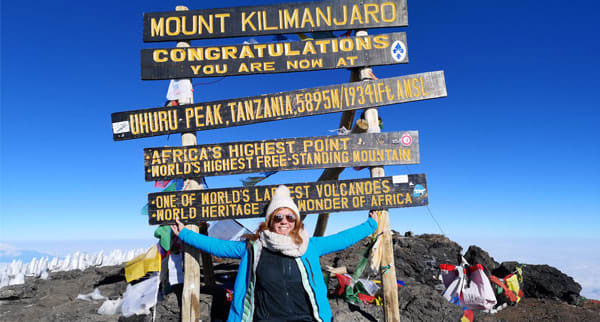
Wild wanders
While summit night is, for many, the most memorable – and challenging – part of any Kilimanjaro trek, it’s far from being the only one. Routes last from five to eight days; I chose the Rongai, a less-trodden, gradually sloped option that approaches the mountain from the north side and covers 42 miles over six days.
In those six days, you cross every type of terrain imaginable. First, shaded woodland and lush green farmland, where black-and-white colobus monkeys swish their fluffy tails and colourful birds perch in the trees. Then, rainbow-coloured moorland filled with thick, bushy heather, sprouting up to waist height in strokes of green, orange and purple. Next, sparse ‘Alpine’ desert scattered with jagged boulders and pineapple-like groundsel plants (unique to east Africa), where you’re literally in the clouds, surrounded by jets of mist.
“Routes last from five to eight days; I chose the Rongai, a less-trodden, gradually sloped option.”
Then finally, the lunar desert – an endless expanse of yellow-grey dust and gravel, barren and empty but for a few tiny rocks scattered here and there, and the occasional raven swooping down in front of you in a flash of inky black.
It feels inhospitable, deserted and so totally cut off from everything it’s hard to believe you’re even on Earth. The one constant throughout is Mawenzi, the cloud-capped peak that dominates the skyline every step of the way, right up until that final night.
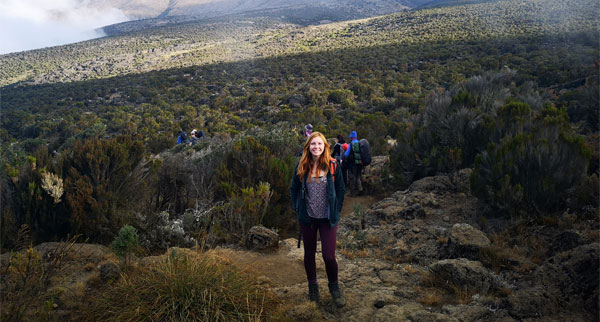
‘Pole pole’
Those days were long and testing in terms of stamina, ranging from three to seven hours of walking (and a challenging 15 on summit day). Though the inclines were gradual and the pace relatively gentle – guides constantly reminded us to take it ‘pole pole’ (‘slow slow’), and there was no technical climbing involved – clients do need to be in good shape.
But those guides kept us going, singing Swahili songs and motivating us with positive words of wisdom when it got a little tougher. Porters carried our luggage, food and tents, darting past us with enviable speed and greeting us with a friendly ‘jambo’ (‘hello’ in Swahili), so that when we arrived at each campsite, everything had already been set up.
“Though the inclines were gradual and the pace relatively gentle, clients do need to be in good shape.”
We quickly fell into a routine – each evening we’d be given a bowl of hot water for washing, then ‘afternoon tea’ (normally popcorn, cocoa and steaming mugs of coffee) would be dished up in the communal tent to warm our ice-block hands. After that, we’d eat dinner together before flopping to bed at a wholesome 9pm, a blanket of stars twinkling overhead like diamonds on a vast, black canvas.
Mornings consisted of 6am wakeup calls, 7.30am communal breakfasts and 8.30am departures. Then it was off to explore the remote, empty landscapes, thoughts floating away in a peaceful daze, crisp air filling our lungs and dramatic, hazy slopes stretching off into the distance.
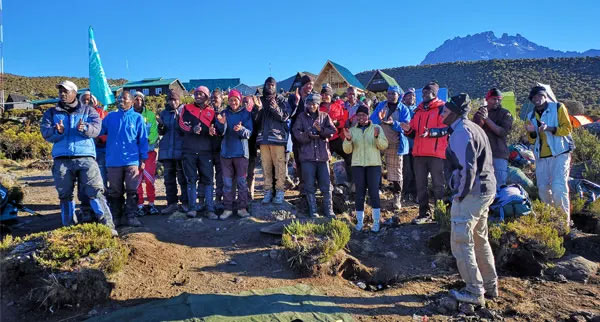
Hakuna Matata
Living in the here and now was invigorating – but even more powerful and uplifting for me was the attitude of everyone around us. ‘Hakuna matata’ (‘no worries’) came to define our trip, and PMA (‘positive mental attitude’) was a phrase I got used to hearing from our guides.
“Forget everything you’ve heard before,” said Makeke the night before summitting. “Nothing is too big a problem if you just take it as it comes.” Those words echoed through my head every step of the way on that final night, and I’ve no doubt they helped motivate me when I was slumped on the side of that rock at 3am.
“Living in the here and now was invigorating – but even more powerful and uplifting for me was the attitude of everyone around us.”
But they’ve stayed with me beyond the mountain too. And despite the tougher parts, I often think about being back there, watching the sun rise and set above the peaks, exploring a place where cars, the internet and technology haven’t reached.
Finding such peace and simplicity is rare, and for clients wanting the adventure of a lifetime where the rest of the world fades away for a few days, this is the real deal.
Book it: Exodus’s 10-day Kilimanjaro Climb Rongai Route starts at £2,949 including two nights’ B&B in a hotel (one at the start and one at the end), five nights’ full-service camping in three-man tents (shared between two), with all meals, Kilimanjaro park fee, the services of a tour leader, guides and porters, plus transport and flights from London.
exodus.co.uk
Top tips
Book with a good operator: Exodus has a 79% summit success rate on the Rongai route, and uses top-notch equipment, food, porters, and guides.
Choose the right route: Other popular routes include Lemosho, Marangu and Machame. Some get busy, so encourage clients to do their research.
Go at the right time: The main trekking seasons are January-March and June-October.
Encourage proper training: Kilimanjaro doesn’t require technical climbing, but the altitude is rated extreme. Suggest The Altitude Centre for exercise classes and resting sessions at simulated altitude.
altitude centre.com
Read more
Experience Ethiopia’s wildlife and ancient monuments
Exploring undiscovered Sierra Leone
Climbing Mount Snowdon, Wales

